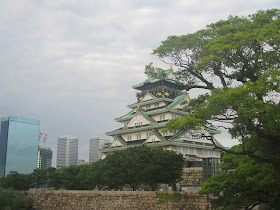Location: Japan, 〒401-0337 Yamanashi Prefecture, Minamitsuru District, Fujikawaguchiko, Motosu, 212
This is the only destination we visited during the fourth day of our 6-day Japan tour. We had this tour right after arrived at Shinjuku Bus terminal of Tokyo coming from Keihan for 6 hours night express bus trip.

Fuji Shiba-sakura festival - it celebrates the annual appearance of 800,000 moss phlox blooms, which burst into life in a rainbow of pink and purple shades. Plus, the dramatic backdrop of Mt. Fuji means the festival provides an abundance of excellent photo opportunities.
Shibazakura (scientific name: Phlox subulata) is a perennial of the family Polemoniaceae, and a species of phlox. From April to May, it blooms in small blossoms of around 1.5 cm diameter, in red, pink, white, or purple. Native to North America, it is also known as “Moss Phlox” Noted for the resemblance of its flowers to cherry blossoms, it is a creeper plant, covering the ground like a lawn, and thus it is called “lawn cherry” (shiba-zakura) in Japanese. This feature makes it a popular choice for edgings or ground cover. (www.shibasakura.jp). For this year, it covered the period from April 15 to May 28, 2017 which was just timely because our Japan tour was from May 15-20, 2017. It opens from 8:00 A.M. to 5:00 P.M. The last bus that leaves the place is at 5:00 P.M.

Without enough rest from an overnight express bus trip from Keihan (Osaka), we arrived at Shinjuku Bus Terminal where we bought our bus tickets going to Fujikawaguchiko where we have been still carrying our trolley luggages.

We did not have time to look for a restaurant to have our breakfast. Inside the bus terminal is Family Mart where we bought our food for breakfast. Tourists were arriving in big numbers and bus tickets are fast-selling like hotcakes. In fact, we were not able to get the bus tour package straight to the Shibasakura. We bought tickets from a local bus in same bus terminal but it was a cutting trip to Kawaguchiko station and we have to take another local bus to the site of Shibasakura.

Shinjuku Expressway Bus Terminal is a part of Shibuya, Tokyo where it is also known as the "New South Gate". The local bus charged us 1,750 yen which was at the time the exchange rate from yen to peso is 1.78 and it amounted to P983.15 for one way per head only. The bus travel was almost 3 hours.

It was already 11:00 A.M. when we arrived at the Kawaguchiko Station and so we had our early lunch there. It was cold in this place. From there, we bought a tour package of 2,000 yen which is a round trip bus fare from Kawaguchiko to Shibasakura location inclusive of the entrance which is a one-hour travel going there.

As we arrived, the bus where we boarded dropped us and we walked to the Shibasakura entrance. Unfortunately, it was raining then and we did not have umbrellas with us. We waited for long for the rain to subside but it took long and so we bought umbrella where it costs 500 yen.

It was still raining when we decided to buy umbrella so we can proceed to the moss phlox. The place is so magnificently amazing. Now words can exactly described the place. It was raining but countless tourists we roaming around the place equipped with umbrella. I spotted two groups having their prenuptial shooting there.

Gradually the rain had stopped and we freely roamed around the area. However, the thick clouds that covered Mt. Fuji were not showing any sign of clearing.

There was one part of the park called Panorama Plazaa where one can capture a good shot and we stayed there for 30 minutes. It is like a wooden elevated flatform where tourists are accommodated to get a good view of the wide expanse of Shibasakura.

Panorama Plaza is just near the Footbath, Photo services and the Panorama Cafe. A few more meters farther is the Mount Fuju Gourmet Tent where it offers the Mount Fuji Delicious Foods Festival.

The Mount Fuji Gourmet is like a food court. There are vendo machines there where your can buy your meal tickets. So, you cannot buy them on cash but through the meal tickets you bought from the vendo machines.






ALTERNATIVE TOUR PACKAGE
Await pickup from Mode Gakuen Cocoon Tower, a short walk from the west exit of Shinjuku station, at 7:40am. After boarding a climate-controlled coach, you’ll make the 2-hour journey to Fuji Motosuka, home to the revered Fuji Shibazakura festival.







































